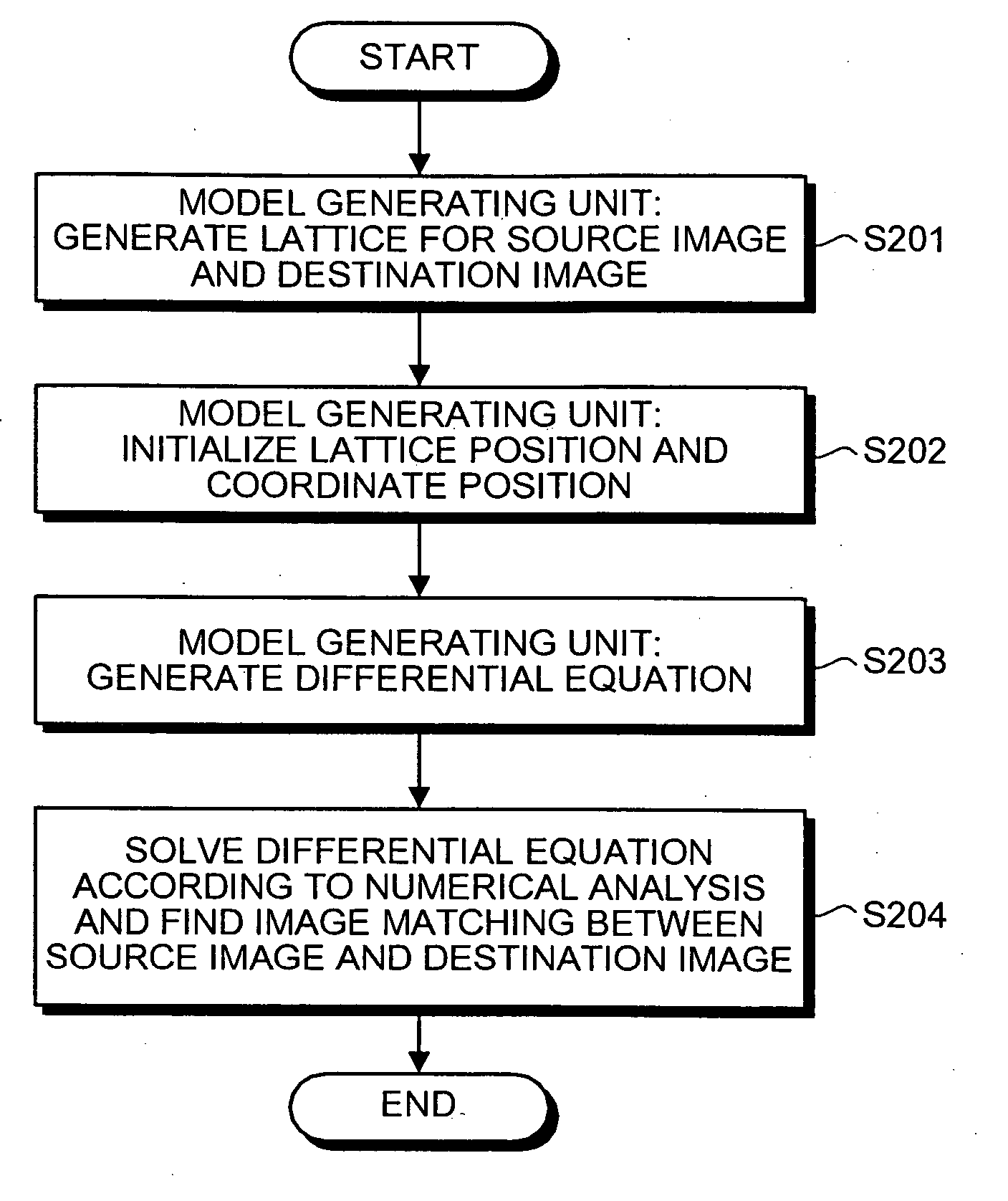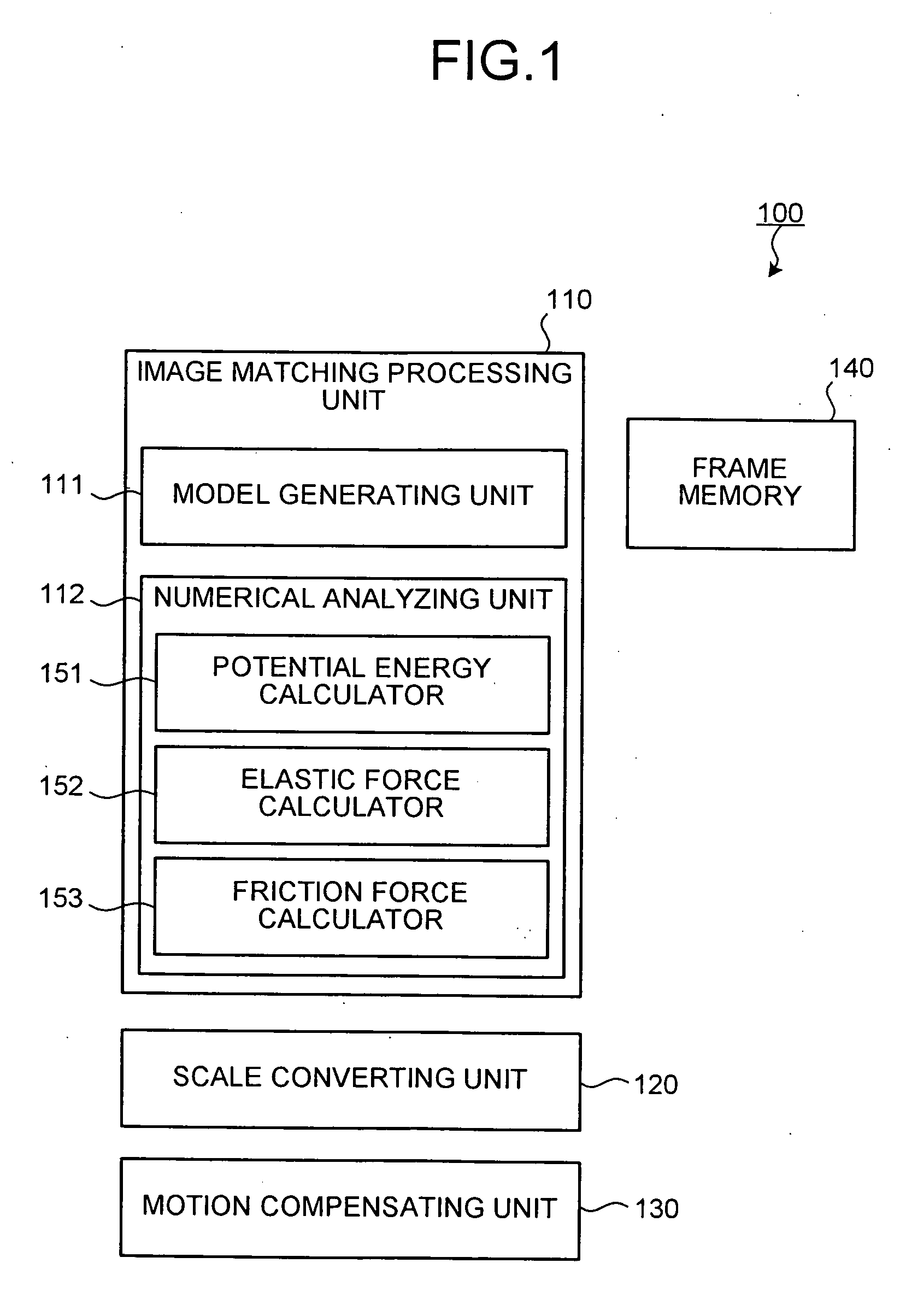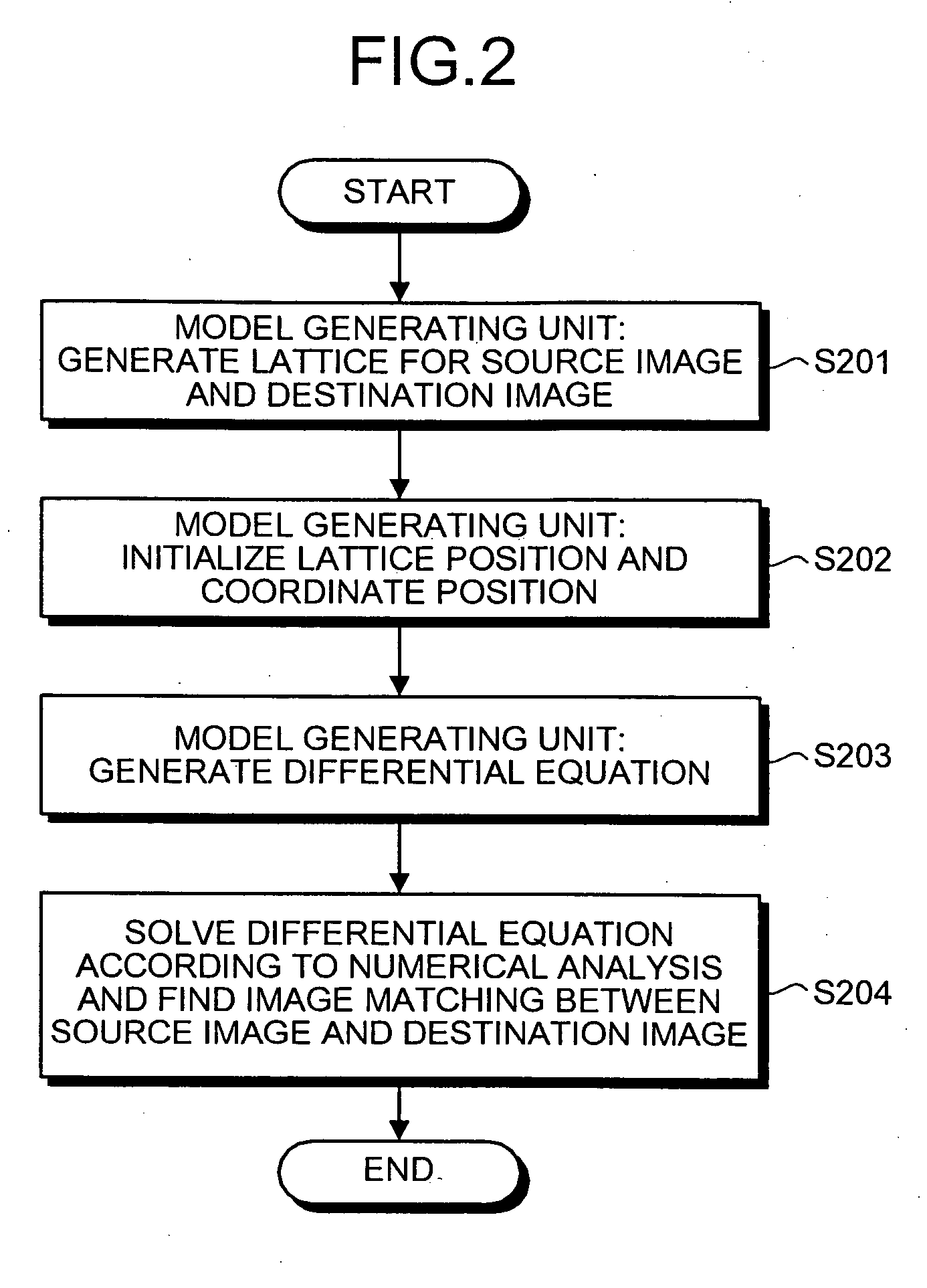Image matching apparatus, method of matching images, and computer program product
a technology of image matching and image, applied in the field of image matching apparatus, method of matching images, and computer program products, can solve the problems of inability to maintain such a quality, difficulty in dealing with fast motion, and inability to solve problems such as problems,
- Summary
- Abstract
- Description
- Claims
- Application Information
AI Technical Summary
Problems solved by technology
Method used
Image
Examples
first embodiment
[0070]FIG. 1 is a block diagram of a functional structure of a motion compensating apparatus according to a first embodiment. The motion compensating apparatus according to the first embodiment, as shown in FIG. 1, mainly includes an image matching processing unit 110, a scale converting unit 120, a motion compensating unit 130, and a frame memory 140.
[0071] The image matching processing unit 110 selects any two images (as a starting image and a ending image) from an input image stream and performs a matching process on the starting image (source image) and the ending image (destination image). The image matching processing unit 110 includes a model generating unit 111 and a numerical analyzing unit 112.
[0072] The model generating unit 111 serves to create a dynamic image matching state transition model which is represented as an ordinary differential equation related with a position and a velocity of each point on the destination image. Each point on the destination image is mapp...
second embodiment
[0137] Next, a second embodiment will be described.
[0138] In the motion compensating apparatus according to the first embodiment, the state transition model is formulated based on the force of the potential energy of the luminance gradient of only a single pixel at each lattice point. Hence, when the target pixel contains the noise component, the potential space becomes complicated to cause distortion resulting in a longer time for the convergence of the model.
[0139] Hence, in a motion compensating apparatus according to the second embodiment, a target is set as a block consisting of plural pixels for the generation of the image matching state transition model. When the block consisting of plural pixels is set as the target of the model according to the second embodiment, the improvement in the robustness of the apparatus can be realized similarly to the block matching method.
[0140] The functional structure of the motion compensating apparatus according to the second embodiment i...
third embodiment
[0145] Next, a third embodiment is described.
[0146] In the motion compensating apparatus according to the first or the second embodiment, the image matching state transition model works according to the force of the potential of the pixel gradient at each lattice point. Hence, when the pixel gradient is not properly generated, for example, when the motion of the image is rough, the system of the image matching state transition model as represented by Equation (17) does not converge to a desired equilibrium position, thereby sometimes failing to realize an appropriate image matching.
[0147] Hence, in a motion compensating apparatus according to the third embodiment, downsampling is performed on the source image and the destination image plural times in a spatial direction, to generate hierarchical structures of the images. The processing is implemented sequentially from the upper layer to the lower layer of the hierarchical structures.
[0148] The functional structure of the motion c...
PUM
 Login to View More
Login to View More Abstract
Description
Claims
Application Information
 Login to View More
Login to View More - R&D
- Intellectual Property
- Life Sciences
- Materials
- Tech Scout
- Unparalleled Data Quality
- Higher Quality Content
- 60% Fewer Hallucinations
Browse by: Latest US Patents, China's latest patents, Technical Efficacy Thesaurus, Application Domain, Technology Topic, Popular Technical Reports.
© 2025 PatSnap. All rights reserved.Legal|Privacy policy|Modern Slavery Act Transparency Statement|Sitemap|About US| Contact US: help@patsnap.com



